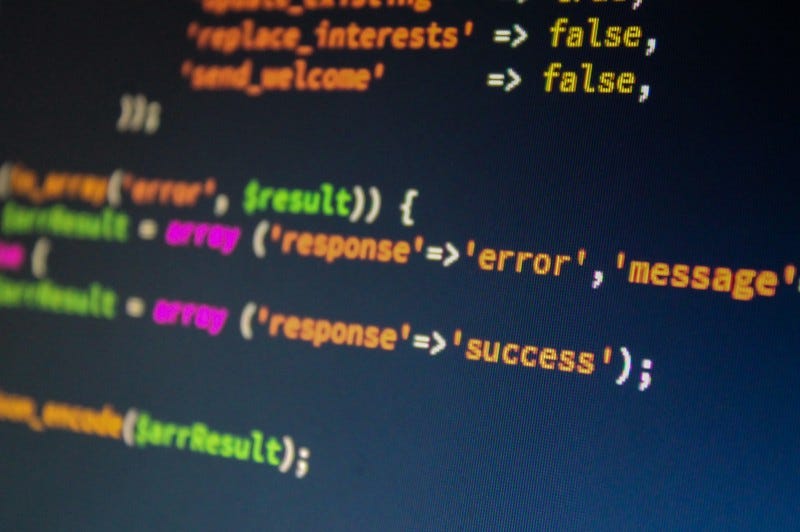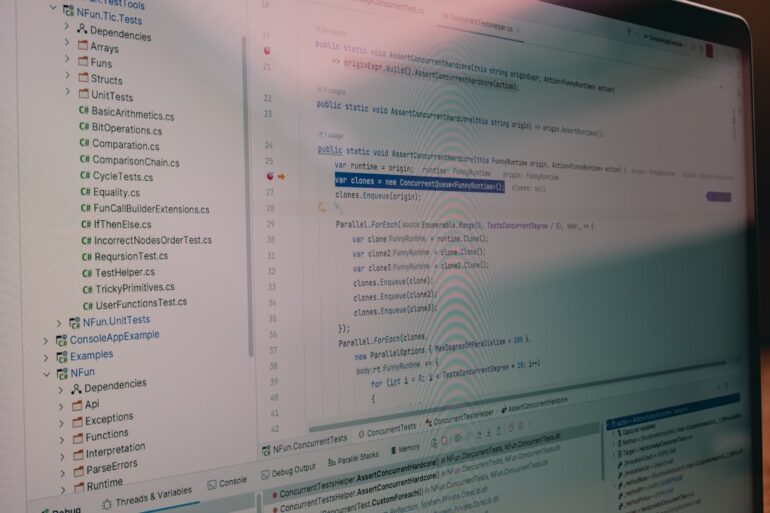Errors are an unavoidable reality in software development. Whether it’s a simple typo, a failed network request, or invalid user input, things will go wrong. However, how you handle these errors is what separates a fragile, frustrating application from a robust, reliable, and user-friendly one. Effective error handling is not just about preventing your application from crashing; it’s a critical discipline that enhances the developer experience, simplifies JavaScript Debugging, and builds user trust. By moving from reactive bug fixing to proactive error management, you can create more resilient systems.
This comprehensive guide will take you on a deep dive into the world of JavaScript Errors. We’ll start with the fundamental building blocks like the try...catch statement and explore the different types of built-in errors. From there, we’ll cover practical, real-world scenarios, including handling errors in asynchronous operations, API calls, and DOM manipulations. Finally, we’ll explore advanced techniques such as creating custom error classes and implementing global error handlers, equipping you with the tools and Debugging Best Practices needed for production-grade Error Tracking and building truly dependable applications.
The Anatomy of a JavaScript Error
Before you can effectively handle errors, you need to understand what they are and how they work in JavaScript. At its core, an error is an object that is created and “thrown” when an unexpected or erroneous situation occurs during code execution. This error object contains valuable information that is crucial for Code Debugging.
The try...catch...finally Block: Your First Line of Defense
The primary mechanism for handling errors in synchronous code is the try...catch...finally block. This structure allows you to isolate potentially problematic code and define a clear path for what should happen if an error occurs.
try: This block contains the code that might throw an error. The JavaScript engine “tries” to execute this code.catch(error): If an error is thrown within thetryblock, execution immediately jumps to thecatchblock. Theerrorobject, containing details about the exception, is passed as an argument.finally: This block is optional, but its code will execute regardless of whether an error was thrown or caught. It’s perfect for cleanup tasks, like closing a file or a database connection.
function getJsonData(jsonString) {
try {
console.log("Attempting to parse JSON data...");
const data = JSON.parse(jsonString);
console.log("Parsing successful:", data);
return data;
} catch (error) {
// The error object contains valuable debugging information
console.error("An error occurred during JSON parsing!");
console.error("Error Name:", error.name); // e.g., "SyntaxError"
console.error("Error Message:", error.message); // e.g., "Unexpected token i in JSON at position 0"
// The stack trace is invaluable for debugging
console.error("Stack Trace:", error.stack);
return null; // Return a default value or handle the error gracefully
} finally {
console.log("Execution has left the try/catch block.");
}
}
// Successful case
getJsonData('{"name": "Alice", "age": 30}');
console.log("---");
// Error case
getJsonData('this is not valid json');Standard Built-in Error Types
JavaScript provides several standard, built-in error constructors that represent common types of errors. Using the correct error type makes your Error Messages more specific and your debugging process more efficient.
SyntaxError: An error in code syntax that prevents the program from running (e.g., a missing parenthesis).ReferenceError: Thrown when trying to access a variable that has not been declared.TypeError: Occurs when a value is not of the expected type, like calling a number as a function.RangeError: Thrown when a numeric variable or parameter is outside of its valid range.URIError: Indicates that one of the global URI handling functions was used in a way that is incompatible with its definition.
Practical Error Handling in Modern Web Development
Modern web applications are complex, involving asynchronous operations, API interactions, and dynamic DOM manipulation. A robust error-handling strategy must account for all these contexts. This is where Full Stack Debugging principles become essential, ensuring both frontend and backend components handle failures gracefully.

The Challenge of Asynchronous Code: Promises and async/await
A traditional try...catch block does not work with callback-based asynchronous code because the callback executes long after the try block has completed. Promises introduced the .catch() method for handling rejections. However, the modern async/await syntax brought back the elegance of try...catch, making Async Debugging significantly more intuitive.
Here’s a practical example of fetching data from an API, a common source of errors in API Development.
// This function simulates fetching user data from an API
async function fetchUserData(userId) {
try {
const response = await fetch(`https://api.example.com/users/${userId}`);
// Check if the HTTP response status is not successful (e.g., 404 Not Found, 500 Server Error)
if (!response.ok) {
// Create a more informative error message
throw new Error(`API request failed with status ${response.status}: ${response.statusText}`);
}
const userData = await response.json();
console.log("User data fetched successfully:", userData);
return userData;
} catch (error) {
// This catch block will handle network errors (e.g., no internet connection)
// and the error we threw manually for non-ok HTTP statuses.
console.error("Failed to fetch user data:", error.message);
// In a real app, you might update the UI to show an error message to the user.
// For example: displayError("Could not load user profile. Please try again later.");
return null;
}
}
// Example usage
fetchUserData(1); // Assuming this user exists
fetchUserData(999); // Assuming this user does not exist, leading to a 404Interacting with the DOM: Graceful UI Updates
Frontend Debugging often involves errors that occur during DOM manipulation. A common mistake is attempting to access a property of an element that doesn’t exist, which results in a TypeError. This can halt script execution and leave your UI in a broken state. Proper error handling can prevent this.
function updateUserProfile(userData) {
try {
const profileNameElement = document.getElementById('profile-name');
const profileBioElement = document.getElementById('profile-bio');
// This will throw a TypeError if 'profileNameElement' is null
profileNameElement.textContent = userData.name;
// This check prevents an error if the bio element is optional
if (profileBioElement) {
profileBioElement.textContent = userData.bio;
} else {
console.warn("Profile bio element with id 'profile-bio' not found. Skipping update.");
}
} catch (error) {
console.error("Could not update the user profile in the DOM.", error);
// You could display a fallback UI or a notification to the user
const errorContainer = document.getElementById('error-container');
if (errorContainer) {
errorContainer.textContent = "Sorry, we couldn't load the profile information.";
errorContainer.style.display = 'block';
}
}
}
// Simulate with valid data
const user = { name: 'Jane Doe', bio: 'Lead Developer' };
// Assuming 'profile-name' exists, but 'profile-bio' might not.
// updateUserProfile(user);
// Simulate an error where 'profile-name' does not exist in the HTML
// and the catch block would be triggered.
// document.body.innerHTML = '<div id="error-container"></div>'; // Example HTML state
// updateUserProfile(user);Advanced Techniques for Robust Error Management
As applications grow in scale and complexity, so does the need for a more sophisticated error management strategy. Advanced techniques like custom errors and global handlers are essential for maintaining large codebases and enabling effective Production Debugging.
Creating Custom Error Classes
While JavaScript’s built-in errors are useful, they can be too generic. Creating your own custom error classes by extending the base Error class allows you to add more context, such as HTTP status codes or validation details. This makes your error handling logic more precise and your code more self-documenting. This is a powerful pattern in both Node.js Development and complex frontend frameworks like React or Angular.
// A custom error for API-related issues
class ApiError extends Error {
constructor(message, statusCode) {
super(message); // Pass the message to the parent Error class
this.name = 'ApiError';
this.statusCode = statusCode;
}
}
// A custom error for data validation problems
class ValidationError extends Error {
constructor(message, field) {
super(message);
this.name = 'ValidationError';
this.field = field; // Add custom property for the invalid field
}
}
function saveSettings(settings) {
try {
if (!settings.username || settings.username.length < 3) {
throw new ValidationError("Username must be at least 3 characters long.", "username");
}
if (settings.theme !== 'dark' && settings.theme !== 'light') {
throw new ValidationError("Theme must be 'dark' or 'light'.", "theme");
}
// Simulate an API call that fails
// In a real scenario, this would be an actual fetch call
throw new ApiError("Failed to connect to the server.", 503);
} catch (error) {
if (error instanceof ValidationError) {
console.error(`Validation Error on field '${error.field}': ${error.message}`);
// Update UI to show the specific validation error message next to the input field
} else if (error instanceof ApiError) {
console.error(`API Error (${error.statusCode}): ${error.message}`);
// Show a generic "could not save" message to the user
} else {
console.error("An unexpected error occurred:", error);
// Fallback for any other errors
}
}
}
saveSettings({ username: 'ab', theme: 'dark' });
console.log("---");
saveSettings({ username: 'testuser', theme: 'blue' });
console.log("---");
saveSettings({ username: 'testuser', theme: 'dark' });Global Error Handling and Monitoring
Even with meticulous try...catch blocks, some errors will inevitably go uncaught. A global error handler acts as a final safety net to catch these exceptions, log them, and prevent the application from crashing silently. In the browser, you can use window.onerror for script errors and window.onunhandledrejection for unhandled promise rejections. In Node.js Errors, the equivalent is process.on('uncaughtException') and process.on('unhandledRejection').

These global handlers are the perfect place to integrate third-party Error Monitoring services like Sentry, Bugsnag, or LogRocket. These tools automatically capture uncaught exceptions, group them, and provide rich contextual data (Stack Traces, browser version, user actions), transforming your Debugging Frameworks from a local process to a proactive, data-driven one.
Best Practices for Debugging and Maintenance
Effective error handling is an ongoing practice, not a one-time task. Adhering to best practices will make your code easier to debug and maintain over its lifecycle.
Don’t Swallow Errors
The most common anti-pattern is an empty catch block (catch (error) {}). This “swallows” the error, making it invisible. The problem doesn’t go away; it just becomes incredibly difficult to find. At a minimum, always log the error. If you can’t handle it at the current level, re-throw it so a higher-level handler can deal with it.
Provide Meaningful Error Messages
Good error messages are crucial for efficient Bug Fixing. Differentiate between user-facing and developer-facing messages. A user should see “Could not load your profile. Please try again,” not “TypeError: Cannot read properties of null (reading ‘name’).” Log the detailed technical error to your console or monitoring service, but present a clean, helpful message to the user.

Leverage Developer Tools
Master your browser’s Developer Tools. Chrome DevTools, for example, is an incredibly powerful suite for Web Debugging. Use the Debug Console for more than just `console.log`. Use `console.error` for errors, `console.warn` for warnings, and `console.trace` to see the call stack. Learn to use breakpoints to pause execution and inspect the state of your application at a specific moment in time. This is one of the most effective Debugging Techniques available.
Conclusion: Building Resilient Applications
Mastering JavaScript errors is a journey from reactive problem-solving to proactive system design. It begins with understanding the fundamentals of try...catch...finally and progresses to handling the complexities of asynchronous code with async/await. By leveraging advanced patterns like custom error classes and implementing global safety nets with monitoring services, you transform errors from disruptive crashes into valuable data points for improvement.
Ultimately, a robust error handling strategy is a cornerstone of professional JavaScript Development. It leads to more stable applications, a more efficient debugging process, and a better experience for your users. Start today by reviewing your project’s error handling. Are you catching async errors correctly? Are your error messages meaningful? Implementing even one of these strategies will put you on the path to building more resilient and maintainable software.











